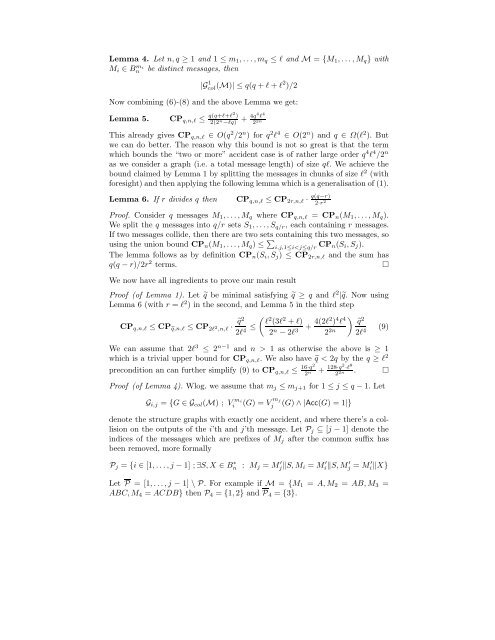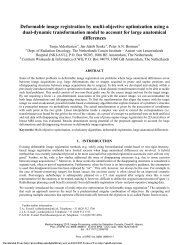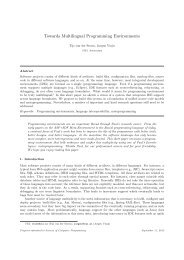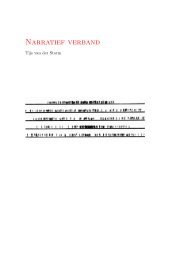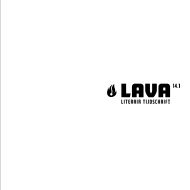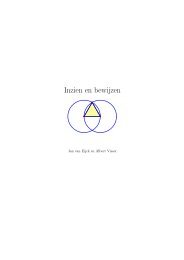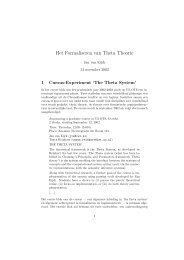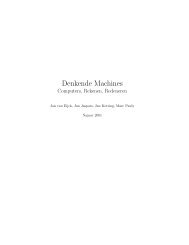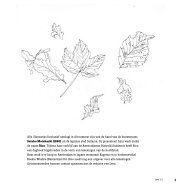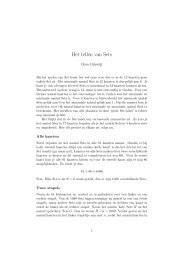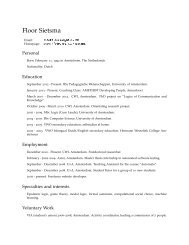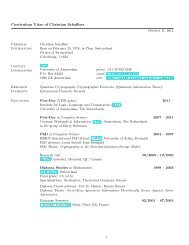A Tight Bound for EMAC - CWI
A Tight Bound for EMAC - CWI
A Tight Bound for EMAC - CWI
You also want an ePaper? Increase the reach of your titles
YUMPU automatically turns print PDFs into web optimized ePapers that Google loves.
Lemma 4. Let n, q ≥ 1 and 1 ≤ m1,...,mq ≤ ℓ and M = {M1,...,Mq} with<br />
Mi ∈ B mi<br />
n be distinct messages, then<br />
|G 1 col(M)| ≤q(q + ℓ + ℓ 2 )/2<br />
Now combining (6)-(8) and the above Lemma we get:<br />
Lemma 5. CPq,n,ℓ ≤ q(q+ℓ+ℓ2 )<br />
2(2n−ℓq) + 4q4ℓ 4<br />
22n This already gives CPq,n,ℓ ∈ O(q 2 /2 n )<strong>for</strong>q 2 ℓ 4 ∈ O(2 n )andq ∈ Ω(ℓ 2 ). But<br />
we can do better. The reason why this bound is not so great is that the term<br />
which bounds the “two or more” accident case is of rather large order q 4 ℓ 4 /2 n<br />
as we consider a graph (i.e. a total message length) of size qℓ. Weachievethe<br />
bound claimed by Lemma 1 by splitting the messages in chunks of size ℓ 2 (with<br />
<strong>for</strong>esight) and then applying the following lemma which is a generalisation of (1).<br />
Lemma 6. If r divides q then CPq,n,ℓ ≤ CP2r,n,ℓ · q(q−r)<br />
2·r 2<br />
Proof. Consider q messages M1,...,Mq where CPq,n,ℓ = CPn(M1,...,Mq).<br />
We split the q messages into q/r sets S1,...,Sq/r, each containing r messages.<br />
If two messages collide, then there are two sets containing this two messages, so<br />
using the union bound CPn(M1,...,Mq) ≤ <br />
i,j,1≤i 1 as otherwise the above is ≥ 1<br />
which is a trivial upper bound <strong>for</strong> CPq,n,ℓ. Wealsohaveq


